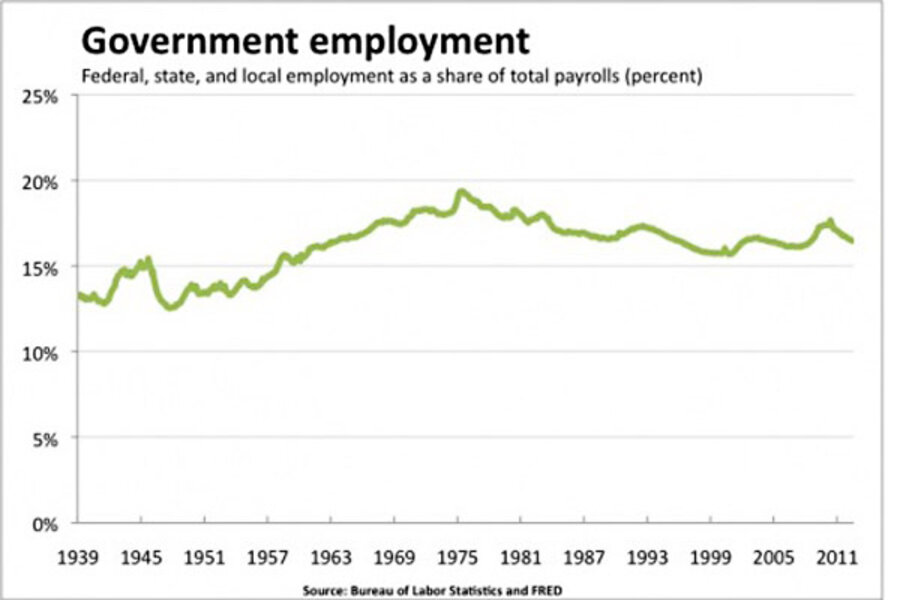Government employment: growing or shrinking?
Loading...
My recent post on government size prompted several readers to ask a natural follow-up question: how has the government’s role as employer changed over time?
To answer, the following chart shows federal, state, and local employment as a share of overall U.S. payrolls:
In July, governments accounted for 16.5 percent of U.S. employment. That’s down from the 17.7 percent peak in early 2010, when the weak economy, stimulus efforts, and the decennial census all boosted government’s share of employment. And it’s down from the levels of much of the past forty years.
On the other hand, it’s also up from the sub-16 percent level reached back in the go-go days of the late 1990s and early 2000s.
Employment thus tells a similar story to government spending on goods and services: if we set the late 1990s to one side, federal, state, and local governments aren’t large by historical standards; indeed, they are somewhat smaller than over most of the past few decades. And they’ve clearly shrunk, in relative terms, over the past couple of years. (But, as noted in my earlier post, overall government spending has grown because of the increase in transfer programs.)
P.S. Like my previous chart on government spending, this one focuses on the size of government relative to the rest of the economy (here measured by nonfarm payroll employment). Over at the Brookings Institution’s Hamilton Project, Michael Greenstone and Adam Looney find a more severe drop in government employment than does my chart. The reason is that they focus on government employment as a share of the population, while my chart compares it to overall employment. That’s an important distinction given the dramatic decline in employment, relative to the population, in recent years.
P.P.S. As Ernie Tedeschi notes, this measure doesn’t capture government contractors. So any change in the mix of private contractors vs. direct employees will affect the ratio. This is another reason why focusing on spending metrics may be better than employment figures.








